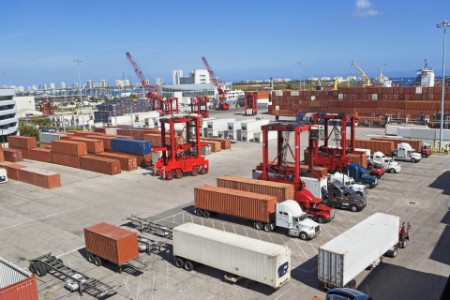
Chapter 1
Impact on supply chains
Cases and insights on those affected the most by current circumstances.
The COVID-19 event has struck various industries, but not all to the same level of damage. Industries such as auto, travel, consumer goods, electronics and retail have been profoundly impacted. Below are some examples.
A market-leading car manufacturer needed to shut down seven of its factories in Korea due to qualified vendors’ inability to deliver components to produce wire harnesses for their vehicles. These suppliers happen to be located within Hubei province, where the Government has implemented a complete and total lockdown during the outbreak. Immediate impact of this issue has affected 40% of this global car manufacturer’s total network output, dictating the pause of a new model launch.
While this carmaker is currently looking for alternate vendors for these critical components, the lead time may not be so quick. Vendor qualification to comply with ISO/TS 16949 quality management requirements may prevent the reopening of these factories in Korea in the near term. Possessing multiple qualified sub-tier vendors and alternative sources in diversified locations would not have eliminated all risk but would have allowed some capacity to be utilized.
Procurement professionals should look to assess category strategies that balance cost and risk starting from new product model/platform planning to day-to-day procurement operations, leveraging technology to support rapid response.
A leading global active-apparels company has been embracing online omnichannel development over the past five years. It has successfully cultivated a new online sales channel (over 25% direct sales) from its traditional offline business model. However, current events and changes in consumer behavior have impacted its offline business significantly, with over 50% of the direct stores closing. The apparels company plans to boost online business supported by agile internal collaboration for ad-hoc marketing events and enable a seamless connection between online and offline inventory to mitigate the loss of its offline business. In addition, a focus on logistics strategy including diversifying its logistics network and last-mile partners have helped navigate this crisis.
The airline industry has taken one of the heavier blows during this crisis. China represents the largest outbound international market and the world’s second largest overall aviation market. With travel restrictions in place, the Chinese airline industry has been estimated by industry analysts to be down significantly versus historical figures. Along with airlines struggling to adapt to the situation, jet fuel suppliers are also feeling the impact. Asian jet fuel prices have declined, and refiners’ profits have slumped to their lowest levels in the last 2.5 years over concerns that the coronavirus will hurt demand. Crude oil companies are now reviewing options to execute emergency production cuts. This instance highlights the importance of having a robust and agile demand-supply balancing capability.
In the value chain planning domain, traditional demand forecasting relies on time series techniques which create a forecast based on prior sales history. However, past sales can be a poor predictor of future sales considering real-world events such as abrupt market shifts, weather changes or natural disasters. One of the leading global beverage companies has adopted Internet of things (IoT) and visual recognition technology to sense demand in coolers installed in convenience stores, restaurants and supermarkets. With such technologies in place, the company can increase visibility of channel inventory and better respond to an event like the coronavirus outbreak even if distributors cannot provide current-state forecast.
A global consumer electronic original equipment manufacturer (OEM) is bracing for prolonged production disruption as local governments have extended shutdown of factories beyond the original 10 February date. The company’s manufacturing presence in China is strong with a massive workforce of local and migrant workers. When they can reopen, the company does not expect a full workforce to return to work.
For manufacturers, labor shortage and replenishment serve as focal points for operations to manage as factories ramp up production after temporary shutdowns. The travel restrictions and health impact from the coronavirus have led to reduction of available migrant workers to return to work.
The emphasis on driving production efficiency, strong yield, and high first pass quality is even more important as many companies have reduced capacity utilization due to staffing limitations. Even after the reopening of factories, most sites are still struggling to achieve 50% of their previous capacity. Focus on management of spare parts availability will be critical as it is likely the company will forego maintenance strategies for more production time to catch up to demand. A major breakdown coupled with unavailability of replacement parts may cause a similar impact as a full factory shutdown. Company EHS programs will also have to be re-evaluated for effectiveness against a disruption such as a pandemic outbreak.

Chapter 2
Building a resilient supply chain
A fine balance is required between current state efforts and a long-term foundation for resilience.
Without a doubt, companies have an arduous task ahead of them to recover from this viral outbreak. However, there needs to be substantial discussion on how to prevent the next unpredictable tidal wave from having the same impact.
Based on the developments from this pandemic, coupled with learnings from past disruptive instances, below are some key pillars to help companies build a resilient supply chain:
1. Conduct end-to-end supply chain risk assessments and prioritize critical focus areas
In the short term, responsiveness and speed are everything. Proactively engage supply chain ecosystem partners, such as suppliers and logistics service providers (LSP), to conduct a risk health check:
- Identify - changing demand and inventory levels to locate critical gaps in supply, production capacity, warehousing and transportation
- Define - common goals and an actionable short-term and outcome-driven resilience strategy with breakdown activities among the supply chain ecosystem, aiming to effectively and efficiently leverage additional networks among various suppliers’ pool, production and distribution networks.
- Deploy - Leading companies build action plans based on scenario analyses to limit the impact of disasters. A fact-based dashboard, including aligned key KPIs help to create enterprise-wide and ecosystem visibility. This can help a company dynamically re-prioritize its plans as needed.
2. Develop a robust risk management process and diversify supplier network
Enterprises should map out supply chain networks from end consumers to tier-N suppliers. For each supply chain node/arc-like channel, warehouse, factory, supplier, or transportation mode, firms should establish a methodology to measure risk.
3. Implement digital and automated manufacturing capabilities paired with strong manufacturing excellence
Leverage automation and IoT solutions for smart manufacturing operations to mitigate reliance on labor intensive processes. A strong manufacturing excellence program enabled by digital technology can allow standardization of daily work and job aids, relieving the pressure of relying on specific individuals to make an operation perform. IoT capabilities can help foster a digital ecosystem of connected systems providing users relevant and updated data to make the most informed decision at any given time. Automated manufacturing capabilities will enable a company to run a manufacturing operation using interchangeable personnel and reduces labor requirements.
4. Evaluate and adjust procurement category strategic priorities
Transform procurement into a value generation function via timely reviews and adjust category strategic priorities to define new business relationships with suppliers to meet the company’s overall supply chain objectives. An agile procurement operations system enabled by various technologies and factoring category strategic priorities across variables such as cost, quality, delivery, innovation, etc. will also help drive resiliency. Companies can introduce digital procurement technology to benefit from supplier social networks. Implementing a supplier social network in sourcing and supplier lifecycle management can strengthen sourcing capability and supplier collaboration in challenging circumstances.
5. Invest in more collaborative and agile planning and fulfillment capabilities
The art-of-possible today in technologies that can bring more agility and collaboration within the enterprise as well as across business partners are endless. From IoT devices for demand sensing and goods movement tracking to advanced forecasting solutions and social medial demand behavior monitoring are heavily impacting how companies understand demand signals and how quickly they can react to them. These capabilities are extremely important for business performance even in normal business conditions and they increase the supply chain resilience in pandemic events like the coronavirus outbreak we are living today.
The current COVID-19 pandemic has caused disruption through all sectors with various degrees of impact. It is time for companies to rapidly assess, recover, and respond quickly through numerous obstacles and challenges that still stand in the way. Through the chaos of recovery, it will be very easy to overlook the root cause and gaps within a supply chain that may have paralyzed businesses during this unpredictable major event in the first place. Building towards a resilient supply chain will be at the epicenter of future discussions for years to come.
Summary
A pandemic outbreak of the magnitude of the coronoavirus has caught companies and whole industries off guard, with a shockwave of ripple effects tearing through their supply chains and businesses. Based on the developments from this pandemic, coupled with learnings from past disruptive instances, this article offers some key pillars to help companies build a more resilient supply chain.


